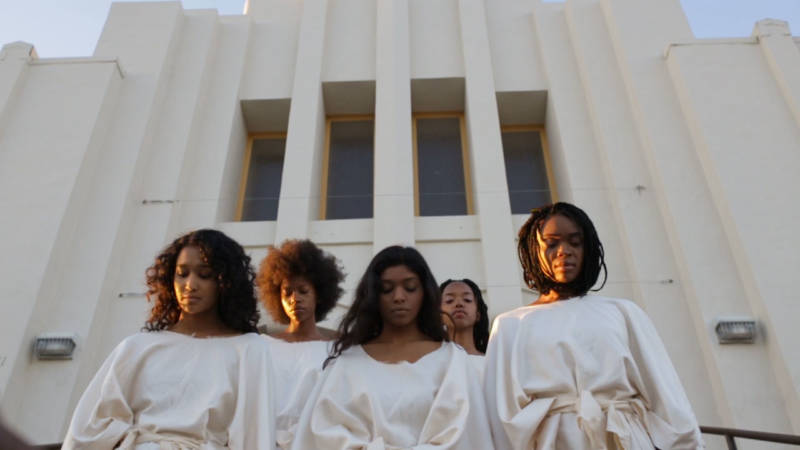“Blue (American Dream),” a music video directed by filmmaker Jasdeep Kang, opens with a woman (Tia Cabral, better known by her stage name, SPELLLING) leaning on the back of a dancer, eyes closed and neck extended to catch the last waning wisps of afternoon light. The characters remain motionless as the camera’s slow, leftward pan highlights the faint glimmer of an Oakland warehouse’s corrugated steel wall — a shine outdone by the sharp sparkle of Cabral’s metallic gold dress further down the frame. Transforming the drab industrial setting into an ethereal, dream-like space is an iridescent lens flare, instantly setting the tone for the remainder of the surreal video in its first two seconds.
Released in late June, the four-minute long collaboration with up-and-coming Berkeley songwriter Cabral is the most recent installment of Kang’s visual work. The music video addresses and criticizes the notion of the American Dream achievable by the immigrant body. It brims with dramatic cinematography, meticulous attention to detail, and a profound interrogation of cultural identity — facets of Kang’s style that have grown to characterize her films with collaborators in the Bay Area.
“One of the biggest things that inspires my work is the concept of identity,” Kang shares. “I look for people who speak truth, [regardless of] whether it’s about identity, spirituality, or decolonization. The people that I’ve worked with so far — I think that they address their identity in a very present way. They’re very open about their ancestral roots… but want to redefine identity in the space that we live in now [while] also addressing how they’re represented in various degrees.”
Kang’s collaborations are few but mighty, perhaps due to the care with which the filmmaker decides her projects. In the last year, she’s collaborated extensively with ONX, an artistic collective that focuses on the black experience. Kang shot Copper, the gorgeous, 14-minute long film on the topic of black death, which acted as the focal point of ONX’s third major release this spring. Previously, she also filmed “Azaadi: Is Freedom Is Fate,” a music video for Berkeley-based musician Kohinoorgasm which explores the intersections of hair, expression, and freedom.





